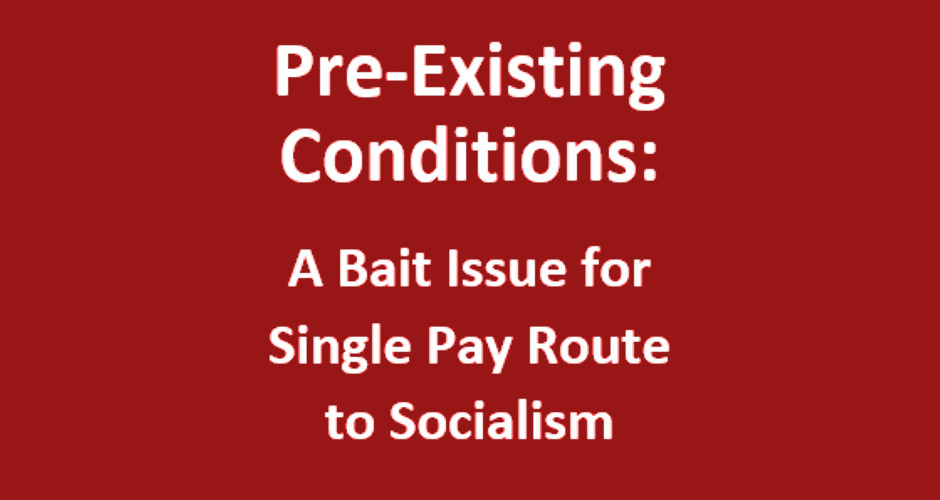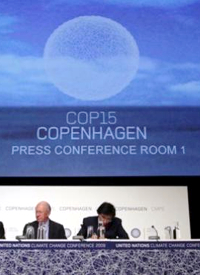From: TheNewAmerican.com ByAlex Newman
 Supporters of Big Government and the nanny state everywhere have for decades glorified the imagined success of Scandinavia’s massive welfare states, citing Sweden, Norway, Denmark, and Finland as alleged proof that drastic restrictions on economic liberty can co-exist with prosperity. In the new book Scandinavian Unexceptionalism: Culture, Markets and the Failure of Third-Way Socialism, however, academic Nima Sanandaji, Ph.D., makes an iron-clad case showing that the Nordic nations’ relative success predates the welfare state. Indeed, the region actually provides bountiful evidence of the benefits of free markets and economic freedom, and of the harm wrought by Big Government.
Supporters of Big Government and the nanny state everywhere have for decades glorified the imagined success of Scandinavia’s massive welfare states, citing Sweden, Norway, Denmark, and Finland as alleged proof that drastic restrictions on economic liberty can co-exist with prosperity. In the new book Scandinavian Unexceptionalism: Culture, Markets and the Failure of Third-Way Socialism, however, academic Nima Sanandaji, Ph.D., makes an iron-clad case showing that the Nordic nations’ relative success predates the welfare state. Indeed, the region actually provides bountiful evidence of the benefits of free markets and economic freedom, and of the harm wrought by Big Government.
With one of the leading 2016 U.S. presidential contenders, self-styled socialist Bernie  Sanders, openly advocating the transformation of America into a Scandinavian-style welfare-state utopia on national television, the book’s message is timely indeed from an American perspective. But as the monograph explains, Sanders, whose campaign has recently surged past Hillary Clinton’s among voters in the key primary state of New Hampshire, is hardly alone in totally misunderstanding the lessons Scandinavia can offer Americans and the world. Left-wing celebrities, politicians, journalists, and ideologues worldwide have also been pointing to the Nordic nations for decades as a model to emulate.
Sanders, openly advocating the transformation of America into a Scandinavian-style welfare-state utopia on national television, the book’s message is timely indeed from an American perspective. But as the monograph explains, Sanders, whose campaign has recently surged past Hillary Clinton’s among voters in the key primary state of New Hampshire, is hardly alone in totally misunderstanding the lessons Scandinavia can offer Americans and the world. Left-wing celebrities, politicians, journalists, and ideologues worldwide have also been pointing to the Nordic nations for decades as a model to emulate.
As Sanandaji explains clearly in his meticulously sourced book, though, what most Big Government advocates see as desirable outcomes in Scandinavia — relative prosperity, high levels of income equality, long lifespans, good health, low levels of poverty, and more — all predate the welfare state. On life expectancy, for example, four out of the top five OECD nations were in Scandinavia in 1960, with Norway at the very top. On income, meanwhile, most of the shift toward “equality” happened between 1870 and 1950 — long before the welfare state took over. Ironically, the emergence of Big Government even put some of  that at risk, along with the long-established cultural norms such as the Protestant work ethic, honesty, social trust, entrepreneurship, innovation, and more that made those advances possible to begin with.
that at risk, along with the long-established cultural norms such as the Protestant work ethic, honesty, social trust, entrepreneurship, innovation, and more that made those advances possible to begin with.
Indeed, before the emergence of welfare-state policies beginning in the 1960s and 1970s, Sweden was among the most prosperous and fast-growing economies on the planet. Between 1870 and 1936, when Sweden was characterized by relatively free markets, the nation enjoyed the highest rate of growth in the industrialized world. Innovation and entrepreneurship flourished, making Sweden one of the richest countries on Earth. Then came the radical Social Democratic period characterized by an ever-larger and more expensive government. Between 1975 and the mid-1990s — marked by the radical, if short-lived, experiment in “Third Way” socialism — Sweden dropped from being the fourth richest nation in the world down to the 13th richest.
Fortunately for Swedes, as the giant welfare state’s harmful effects became increasingly obvious, the Swedish political class began to reverse course. From lowering taxes and government spending to deregulating and privatizing broad swaths of the economy, policymakers realized that the nation’s continued success depended on freer markets — not total government. Still, the damage was severe. As Sanandaji explains, citing his earlier research on the subject, the rate of business formation during the “third-way era” was “dreadful.” In 2004, none of the 100 largest firms ranked by employment were founded within Sweden after 1970. “Furthermore, between 1950 and 2000, although the Swedish population grew from 7 million to almost 9 million, net job creation in the private sector was close to zero,” he observed.

Today, Denmark, despite higher taxes, has more economic freedom than the United States. Sweden and Finland are both catching up, too. And interestingly, despite Sanders’ recent pronouncements on ABC News about Scandinavia having “more income and wealth equality,” Sweden still has a great deal more “wealth inequality” today than the United States, according to a study cited in the monograph.
To understand just how damaging the Scandinavian “third way” era was, Sanandaji cites a startling admission by Bo Ringholm, the Social Democratic finance minister of Sweden at the time. “If Sweden had had the same growth rates as the OECD average since 1970, our total resources would have been so much greater that it would be the equivalent of 20,000 SEK [$2,700] more per household per month,” Ringholm is quoted as saying in 2002. And as Sanandaji shows clearly and convincingly, often using government data, a major reason that Sweden’s economy did not grow at the rate of other OECD economies during that period was the lack of economic freedom.
Aside from the economic toll, the “third way” period in Sweden and other Scandinavian nations also led to a deterioration of what Sanandaji calls “social capital.” On this front, there are a lot of interesting examples provided in the book to make the case. Consider, for example, the remarkable shift in attitudes among Swedes on abusing the welfare system. In the 1981-1984 World Values Survey, 82 percent of Swedes agreed that it was never justifiable to accept welfare benefits one is not entitled to. Just three decades later, barely more than half of Swedes agreed. Examining sickness- and disability-related unemployment benefits, Sanandaji also shows that Scandinavian governments spend more than any others with the exception of the Netherlands — despite the overall excellent health of Scandinavians compared with people in other nations.
Scandinavian Unexceptionalism also focuses a great deal on the problems Scandinavian governments have in integrating immigrants — far more difficulties than, say, the United States or the United Kingdom. Non-Western immigrants in Scandinavia, both among the highly educated and those with lower levels of education, have drastically higher levels of unemployment than natives. Sanandaji, who immigrated to Sweden as a child from Kurdish Iran, attributes the phenomenon, citing a vast amount of evidence, to Big Government policies such as rigid labor-market regulations, generous welfare payments that distort incentives, and more. Despite all of the government-backed “gender equality” programs that have proliferated across Scandinavia, meanwhile, Sanandaji makes a compelling case that bloated public sectors represent a major handicap to women’s success in the private sector. Even Eastern Europe has far more women in high corporate positions than Scandinavia.
Among the most fascinating and informative elements of the book is Sanandaji’s comparison between Scandinavians in Scandinavia and those who immigrated to the United States. The findings poke a major hole in arguments made by Big Government supporters who point to Scandinavia and confuse correlation with causation. “The descendants of Scandinavian migrants in the U.S. combine the high living standards of the U.S. with the high levels of equality of Scandinavian countries,” Sanandaji notes in a summary of his findings comparing the estimated 12 million Scandinavian-
Americans with Scandinavians in Scandinavia, which are explored in an entire chapter dedicated to the topic. “Median incomes of Scandinavian descendants [in the United States] are 20 percent higher than average U.S. incomes.”
And even that number underestimates the real differences, because Norway’s phenomenal oil wealth (and small population) drastically skews the figures. Consider: Swedish Americans contribute 39 percent more to GDP per capita than Swedes in Sweden, while Finnish Americans contribute a stunning 47 percent more than Finns in Finland. “We cannot draw definitive conclusions from these figures, since household composition may differ, but there is prima facie evidence that Scandinavians who move to the U.S. are significantly better off than those who stay at home,” Sanandaji acknowledges. The book also shows that poverty rates among descendants of Nordic immigrants in the United States today are lower than the poverty rates of Scandinavians who did not cross the Atlantic.
 “This suggests that pre-existing cultural norms are responsible for the low levels of poverty among Scandinavians rather than Nordic welfare states,” Sanandaji says. “The success of Nordic immigrants in the U.S. shows the pervasiveness of norms and low-level social institutions. The comparison with Scandinavian Americans suggests that the pursuit to create ‘social good’ through welfare state policies has hindered economic prosperity…. Thus, what makes Nordics uniquely successful is not the welfare states, as is commonly assumed. Rather than being the cause of these nations’ social strengths, the high-tax welfare state instead seems to have been made possible by the hard-won stock of social capital.”
“This suggests that pre-existing cultural norms are responsible for the low levels of poverty among Scandinavians rather than Nordic welfare states,” Sanandaji says. “The success of Nordic immigrants in the U.S. shows the pervasiveness of norms and low-level social institutions. The comparison with Scandinavian Americans suggests that the pursuit to create ‘social good’ through welfare state policies has hindered economic prosperity…. Thus, what makes Nordics uniquely successful is not the welfare states, as is commonly assumed. Rather than being the cause of these nations’ social strengths, the high-tax welfare state instead seems to have been made possible by the hard-won stock of social capital.”
Sanandaji’s excellent research strongly supports his overall conclusion that the Scandinavian welfare states hindered prosperity, economic growth, and rapidly contributed to the deterioration of the very cultures and social norms that even made the welfare states possible to begin with. “Many analyses of Scandinavian countries conflate correlation with causality,” he argues. “It is very clear that many of the desirable features of Scandinavian societies, such as low income inequality, low levels of poverty and high levels of economic growth, predated the development of the welfare state. It is equally clear that high levels of trust also predated the era of high government spending and taxation. All these indicators began to deteriorate after the expansion of the Scandinavian welfare states and the increase in taxes necessary to fund it.”
In other words: Americans, beware. In Scandinavia, with the partial exception of Norway which is able to coast along thanks to its gargantuan oil revenues, governments have started to learn the error of their ways and have drastically reversed course, expanding economic freedom across the board. (Personal freedom is another matter, of course). Those who seek to push Scandinavian-style Big Government in the United States are either misunderstanding the facts, or deliberately misleading you. And Scandinavian Unexceptionalism, a must-read for economic-policy wonks and anyone interested in understanding the region’s success, makes that abundantly clear.



























































